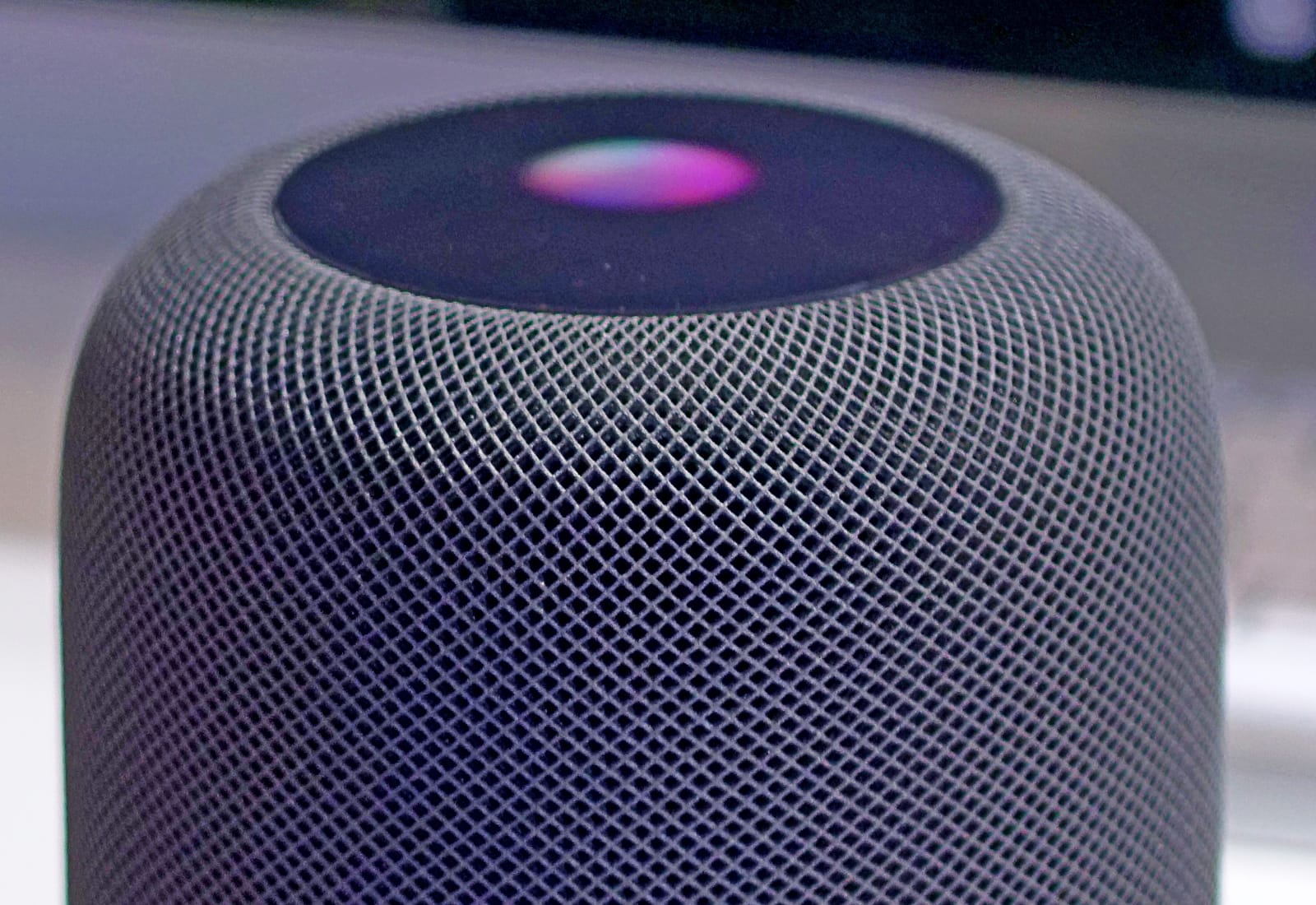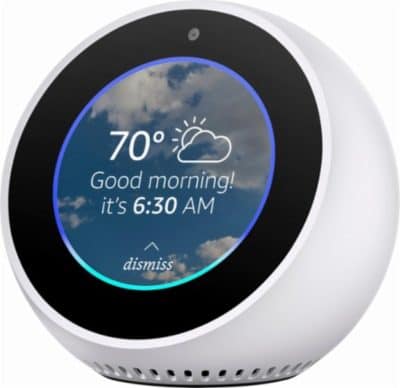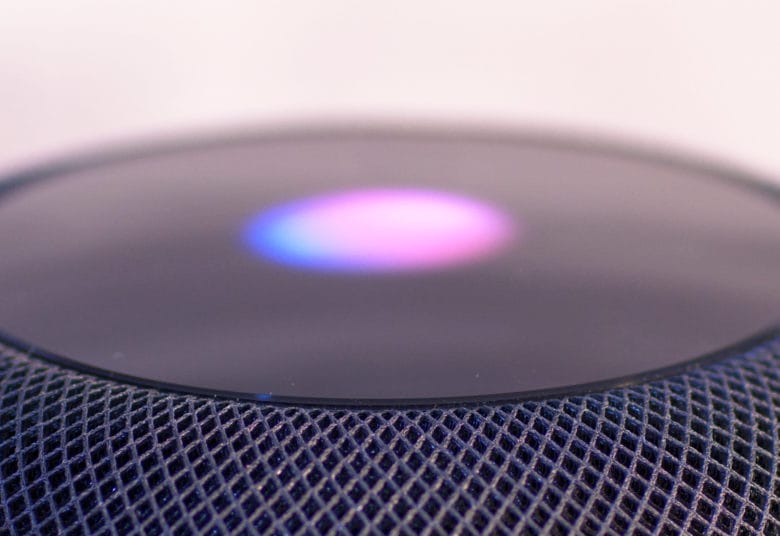5 ways HomePod could catch up with its rivals

The iPhone dominates smartphone sales charts. The iPad is so ubiquitous that, for many, its name is a catch-all term for any tablet. The Mac is the most desirable computer out there. But the HomePod? Not so much.
According to figures released this week, Apple’s smart speaker made up just a tiny 6 percent share of all smart speaker shipments for the first quarter of 2018. What is Apple doing wrong? And what could it do to turn things around? Here are five suggestions for HomePod improvements we’d like to see.
Make HomePod cheaper
This one is tricky. Throughout the years, Apple has shown — time and again — that people who criticize its products for being expensive wind up on the wrong side of history.
According to Mac project originator Jef Raskin, Steve Jobs was making a fatal mistake by making the Mac too pricey. Folks balked at the price tag of the iPod, and Microsoft’s Steve Ballmer outright laughed at how expensive the iPhone was. Most recently, analysts predicted doom for the $1,000-plus iPhone X, only to be left looking foolish after Apple’s best-ever March quarter.
Every time, Apple proved detractors wrong.
Photo: Apple
Still, taken alongside the other points on this list, I’m going to risk future foolishness and say that the HomePod is too pricey. $349 may make it one of Apple’s cheaper devices, but it’s a lot more expensive than the $100 Amazon Echo and the $129 Google Home. And it’s a heck of a lot more than the Echo Dot and Google Home Mini, both of which cost less than $50.
Apple is supposedly working on a cheaper, smaller HomePod to compete with the latter two products. And both the iPhone and iPod received price cuts early in their life cycles, which greatly improved adoption. In other words, this is something Apple is likely to do. Cupertino should cut the HomePod price soon, though. The longer it stays at $349, the more users get locked into either the Amazon or Google ecosystems.
Experiment with other form factors

Photo: Amazon
When the iPod came out, it looked a whole lot better than other MP3 players of the time. The iPhone looked like it came from a different century when compared to the bulky mobile phones we used at the time. Steve Jobs famously said that the iMac G3 looked like it came from a different planet, with better designers.
The HomePod … kind of looks like everything else.
Sure, it’s a bit more attractive, and the mesh material covering gives it a marginally more pleasing appearance. But it’s doesn’t look substantially different from its inoffensive-looking, or even attractive, rivals.
Market leader Amazon is carving out a name for itself based on its innovation and willingness to experiment. The Echo Show added a screen. The Echo Spot took the form of a smart alarm clock — again, with a screen thrown in.
Apple doesn’t have to produce a HomePod for every conceivable form factor, but it wold be nice if it was immediately apparent where your extra cash was going. Right now, the smart speaker market is deep into the experimentation phase. So feel free to mix it up a bit!
Improve Siri on HomePod
Apple can insist all it wants that HomePod isn’t built around Siri in the way that Echo and Google Home are built around their AI assistants. But that’s not how it looks for most people. Almost every regular customer I speak to sees the three products as rivals in the same category — and there’s no doubt that Siri comes off poorly.
I’ve written a list of ways I’d like to see Apple improve Siri. Even if Apple doesn’t want to overhaul its not-so-smart assistant, though, it should give HomePod users some necessary improvements. A lack of multi-user support, and the ability to set only one timer at a time, seem like mandatory immediate corrections. And music-based commands like being able to say “start [insert song] in 10 minutes” or “turn off after the next track” would be handy.
Apple has worked hard to improve the disastrous Apple Maps since its inception. Siri, however, has never received the same care and attention. It feels like an afterthought — and, as a result, so does a Siri speaker.

Photo: Ste Smith/Cult of Mac
Make HomePod a device for true music fans
This one might sound strange, since Apple has been more focused on creating a device for audiophiles than either of its rivals. Most reviews praised the HomePod for how good it sounds. And the speaker’s ability to calibrate sound for whichever room it’s in is nothing short of remarkable. So how, then, could Apple do more to make HomePod the unequivocal choice for any serious music fans?
There are a few ways. Multi-speaker support via AirPlay 2 is coming this year, but really should have been there from the start. Siri could be fine-tuned to be a digital music expert, giving users more control over editing and playing playlists and wisely pulling up live, remixed or alternate versions of songs.
Finally, while I realize Apple wants to grow Apple Music subscriptions, would it so terrible to allow rival services on HomePod? A lot of folks I know have been put off by the lack of Spotify support.
Convince us you’re serious!

Photo: Apple
This is, in some ways, both the easiest and most difficult item on this list. HomePod is a good product, but it’s not selling in the kind of numbers you’d expect from Apple. Part of this may well be linked to the fact that, from Apple’s perspective, HomePod is treated as an afterthought.
Like the Apple TV, smart speakers aren’t a category that Apple appears to view as much more than a “hobby.” Is Apple launching a HomePod because it genuinely believes in the technology or because it wants a product on the shelves? It sure feels like the latter.
Apple’s done this before. The iPod Hi-Fi launched in 2006, also costing $349. It was a good product, but Apple treated it like an afterthought. By the end of 2007, it was gone. Or how about the MacBook’s Touch Bar? Or Apple’s pro-grade Macs?
Everyone has seen what Apple’s marketing firepower can do when it really cares about a product. With HomePod, it’s not so obvious that it does. And that’s very, very different from how Amazon and Google treat their smart speakers.
Are we wrong?
Are we selling Apple short? Is HomePod going to gain momentum, like the Amazon Echo and Google Home, or will it fall by the wayside? What other changes do you think Apple could make to ensure this product becomes a hit? Let us know your thoughts in the comments below.




